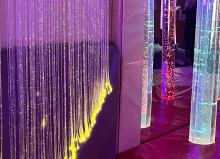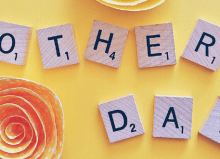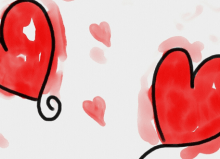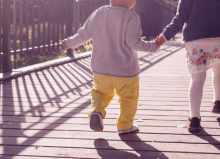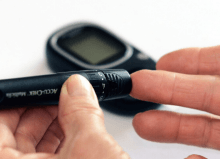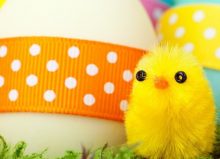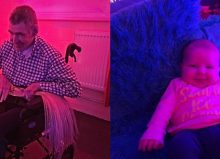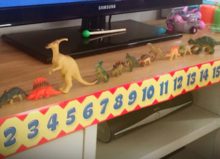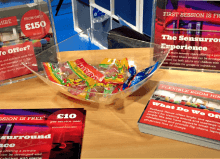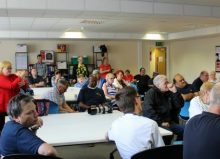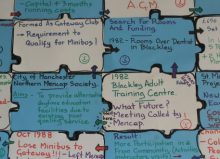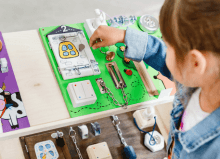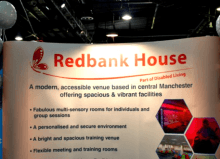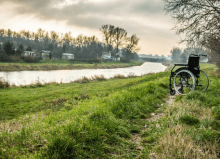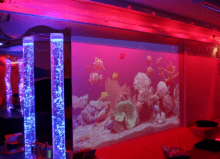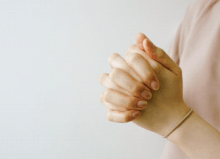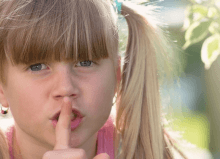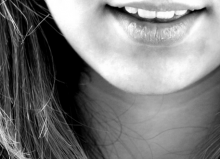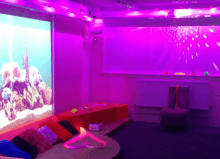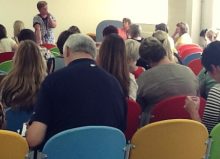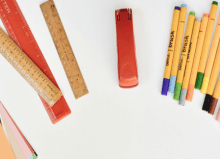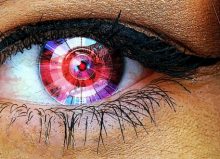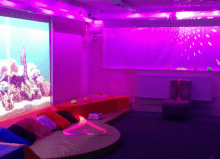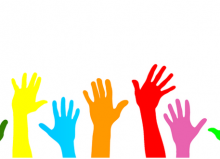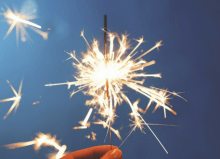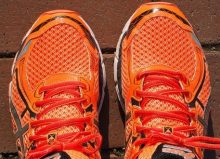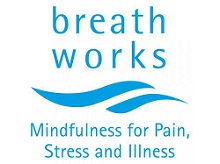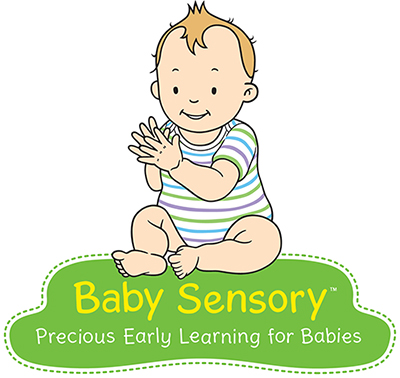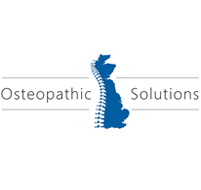Subconscious Sensory Support for Independence and Mobility

This article is a guest blog for Redbank House written by Joanna Grace from The Sensory Projects. It focuses on what two of our subconscious sensory systems have to offer us in terms of supporting independence and mobility. The senses that it focuses on are our proprioceptive and vestibular senses.
Proprioception
Your proprioceptive sense is your sense of where your body is in space. Imagine yourself drinking a cup of tea one evening, when suddenly there is a total power cut and all the lights go out. Could you still reach for your cup of tea? You could and most likely you would find it without having to run your hand along the table top. This is because you have a memory of where you last put the tea down, and a knowledge of where your hand is. You do not find it with vision, smell, taste, sound or touch, you find it by tapping into your proprioceptive awareness.
Vestibulation
Your vestibular senses are your sense of motion and balance. Put yourself into another imaginary power cut situation. This time you are in a rather more unusual scenario. Imagine you are sat at the top of a snowy hill inside a fully enclosed sled. This means you cannot feel the wind or the cold on your skin or hear the sounds outside of the sled. Just as the power cut struck, you were waiting for the person to come along and give your sled the push to start it hurtling down the hill.
The darkness surprises you, you sit and wait. Your senses are hyper alert, but you cannot see or hear anything. Suddenly the push comes, and you feel yourself gliding down the hill.
How did you know you had moved? You didn’t see the movement of the world outside as you hurtled past. The enclosed nature of the sled meant you couldn’t hear the crunch of the footsteps of the pusher on the snow, or the creaks of the snow as they compressed it. You certainly did not taste or smell your movement. And your tactile sensations are still of the interior of the sled. But you know you are moving. It is your vestibular sense that brings you that information.
People often underestimate the value of the subconscious senses and rarely stop to consider whether someone might be struggling against an impairment to one of them. To give you some perspective on the matter, if you lose either your proprioceptive or vestibular sense, that equates to total paralysis. Without a sense of where your body is in space you cannot move it. Without a sense of motion and balance you cannot move or balance. These sense are fundamental to our abilities to move within the world, and as such we can deploy them when we are looking to enhance someone’s capabilities with regards to motion and balance.
Sensory support for people with vestibular impairment
Subconscious sensory information only takes on meaning when partnered with matching information from the conscious sensory systems. Suppose in that imagined blackout I had perfectly suspended you in space. You felt a surge of forwardness in relation to your own body. That sensation alone does not tell you if you are moving up or down, left or right. It is only when it is partnered with the visual information of an object getting closer or further away that it is useful to your orientation of self.
To support someone with a vestibular impairment we must provide bold matching stimulus to help them use the vestibular capabilities that they have.
Here is another scenario. Imagine yourself on a high wire tied between two trees. You must balance from one to the other. What do you focus on? Is it the wobbly sensations from your vestibular sense that tell you the wire is unsteady? Or do you lock your eyes on the tree trunk ahead of you before cautiously sliding your foot forward? You fix on vision. Like holding onto someone’s hand when we balanced along a wall as toddlers, wehold onto the visual world to inform our balance.
Here are some simple examples of visual support we can give in a care environment to help with vestibular processing.
Makes sure floors are plain (patterns can appear like holes to people with visual processing differences) and contrast in colour from the walls. If the carpets are bold, have a different colour ceiling to give that orientation of floor, wall and ceiling.
To provide a visual guide at eye level, a high dado rail or a low picture rail in a contrasting colour to the wall are good for this. Think about people regaining their mobility who walk up and down between parallel bars that are there to grab onto and steady themselves if needed. The dado rail or the picture rail are the visual equivalent of those grab bars.
Give clear visual information to guide direction For example, if there is a corridor someone must walk down, have something bright at the bottom of the corridor such as a bold picture or a vase of flowers. Make the rest of the corridor as unremarkable as possible. The eye as it exits the room will naturally look up and notice the flowers or the picture and guide the direction of the vestibular systems towards it.
Proprioception Impairment
Someone with a proprioceptive impairment struggles to know where their body is in space. As a result, they may appear clumsy or overly anxious. It is common for autistic people to have a deficit in proprioceptive sensation which may go some way to account for the high levels of anxiety they live with.
You have probably had a couple of examples of diminished proprioception in your life. When you were a youngster or a teenager did you become clumsy after a growth spurt? Your proprioceptive awareness of where your body was in space will not have kept pace with the growth of your body. Have you ever, on the boundaries of sleep, felt like you were falling? That sudden gasp of not knowing where your body is in space and the relief of discovering that you are indeed safe in bed. What happens to you in that moment is that your proprioceptive system drops off to sleep slightly before you. That momentary gasp of high anxiety gives you insight into what a life without a fully functional proprioceptive sense might feel like. It also gives you insight into how you can support someone who struggles with their proprioception:
Sensory support for people with proprioceptive impairment
What you want to do for someone with a proprioceptive impairment is exactly the same thing as you do for yourself when you have the horrible experience of falling in bed. You reach for information through a different sensory system to let you know where you are in space. You reach for tactile experience which is an ideal way to access this information.
Here are some simple ways that you can offer partnered stimulation to support proprioceptive awareness:
Compressive clothing (e.g. socks to wear on airlines to stop deep vein thrombosis) squeeze the feet. That squeezing gives you a bit more information about where your feet are. In the same way tights might be more informative than pop socks. Many athletes wear compressive clothing because that tiny bit of extra knowledge of where their limbs are in space makes them slightly more able to coordinate and use those limbs. Looking at compression wear clothing from sports brands can be a good way of avoiding the mark up that the word ‘sensory’ on a product brings.
Your proprioceptive receptors are located in your joints and tendons. If someone were struggling to hear us, it is likely that we would speak louder. In the same way, adding weight to an item amplifies the information the proprioceptive system receives about its location. A bolder message is easier to understand and more informative to the body as it attempts to move.
Massage or body brushing (which could be offered as a part of someone’s bathing arrangements) are good for heightening awareness of where a person’s body is in space.
Compression and weight are both deployed to address the anxiety associated with diminished proprioception. Recently, weighted blankets have become popular. Although someone with diminished proprioception may need this additional input in order to feel safe (to not feel like they are falling through space), this is not to say that people with functioning proprioception do not benefit from it too. We ALL feel safer when we have bolder messages about where our body is. Weighted blankets can be very expensive to buy, but are very simple to make.
How to make a weighted blanket
I have known people use rice or lentils to weight a blanket. If you want to make a washable weighted blanket for someone you need four things: 1) An old duvet cover. 2) To know how much that person weighs. 3) Access to a sewing machine. 4) The right amount of pellets to fill the blanket with. Glass or plastic pellets for weighting things are readily available online.
First work out how much weight you will need. You will need 10% of the person’s body weight.
Next, sew channels into your duvet cover. You do not need to be a skilled seamstress to do this. Simply press go on the sewing machine and directing it in straight lines down the blanket effectively creating columns.
You will be turning these columns into a grid later. Calculate in your head how many squares that grid will have. For example, if you have five columns and you think you have room on the cover to sew eight lines for the grid, then you will have forty boxes in your grid. Divide the weight of pellets you have by the number of boxes you have. This will help you to know what weight of pellets will go into each box. Then simply scoop that weight into each of the columns and sew across to seal it in.
You will end up with a duvet cover sewn with a grid and in each square of that grid has a scoop of pellets within. The weight of the blanket is evenly distributed. Now pop it inside another duvet cover and you’re good to go.
A good rule of thumb for a weighted blanket is to have it on for about 20 minutes. They can be useful to help people go to sleep. However, they should not be left on as a person sleeps as they can sometimes make it difficult to breathe.

